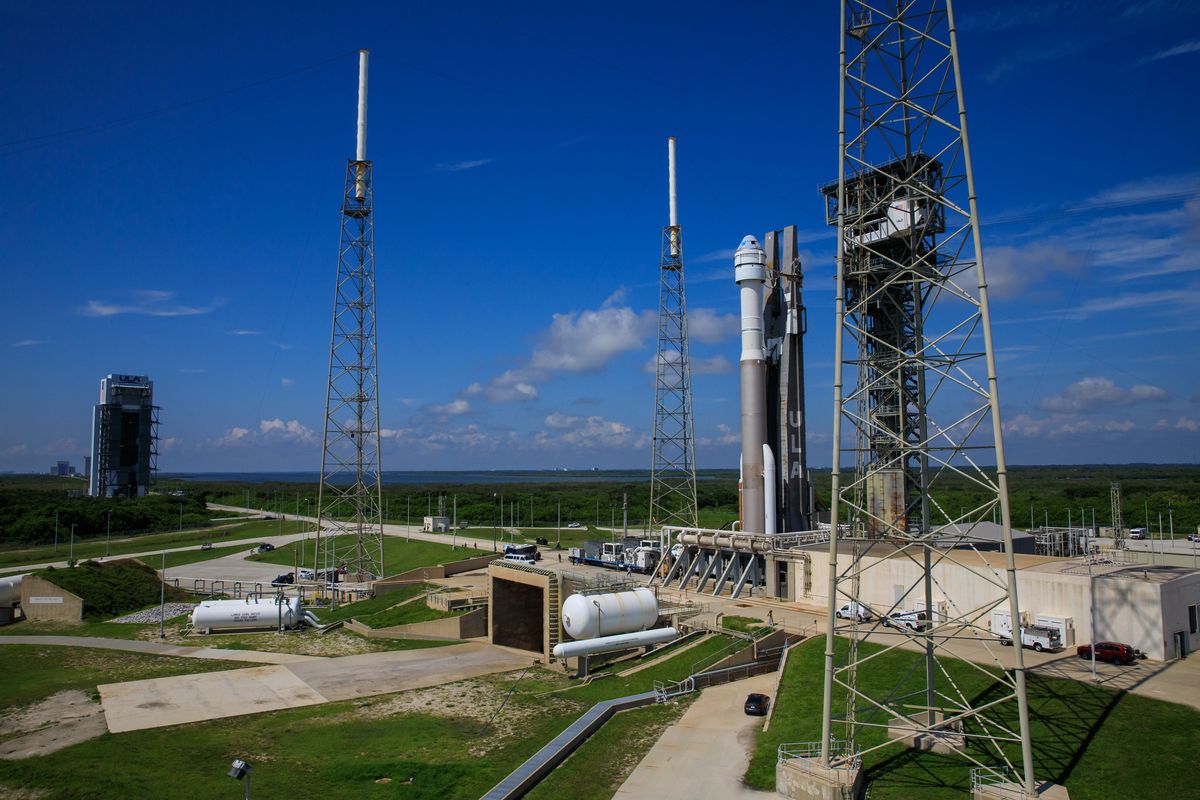
Weather concerns continue as NASA and Boeing look to launch the Starliner capsule on a vital uncrewed test flight to the International Space Station on Tuesday (Aug. 3).
Launch is targeting 1:20 p.m. EDT (1720 GMT), and current weather patterns are favoring afternoon showers and thunderstorms along the eastern coast of Florida, according to the 45th Weather Squadron, which monitors conditions for launches from the Kennedy Space Center and the Cape Canaveral Space Force Base. There's a 40% chance the weather will permit Tuesday's launch, according to the office's current forecast, which suggests that Starliner may be able to blast off the pad before troubling weather rolls in.
"The greatest coverage of convection is expected to hold off until after the launch window," squadron officials wrote in a statement published Saturday (July 31). "Still, a weather-related violation is possible due to isolated showers and thunderstorms in the area, particularly towards the end of the count."
Related: Boeing Starliner Orbital Flight Test 2: Live updates
In photos: Boeing's Starliner Orbital Test Flight 2 mission to the International Space Station
In particular, the office is monitoring cumulus cloud formation, surface electrical fields and the potential risk of lighting.
The same tricky weather conditions that are worrying launch personnel also prompted the mission team to roll Starliner and its Atlas V rocket back inside from the launch pad, where it had arrived on Thursday (July 29) in preparation for a Friday (July 30) launch. Although weather conditions were also a concern for that launch date, the mission was postponed after the International Space Station spent about 45 minutes on Thursday out of its proper orientation when a software glitch caused thrusters on a newly arrived Russian science module to fire.
If Starliner can't launch on Tuesday, the next opportunity will be Wednesday (Aug. 4). Whenever the capsule does blast off, the launch will begin a day-long trek to the International Space Station, where it will spend less than a week before returning to Earth to land in the western United States.
The launch, called Orbital Flight Test-2 or OFT-2, marks a crucial milestone for Boeing's Starliner system, which first attempted an uncrewed test flight to the space station in December 2019. However, a series of glitches meant the capsule was unable to reach the orbiting laboratory and returned to Earth without accomplishing its primary mission: proving that the system is ready to carry astronauts.
Nineteen months later, after addressing 80 recommendations produced by NASA and Boeing investigations into the failed flight, Starliner is ready to give flight another try. A successful mission would pave the way for three NASA astronauts to launch later this year on a crewed flight test, which would in turn allow Boeing to begin regularly ferrying astronauts to orbit, as its competitor SpaceX has already begun doing with the Crew Dragon capsule.
Email Meghan Bartels at mbartels@space.com or follow her on Twitter @meghanbartels. Follow us on Twitter @Spacedotcom and on Facebook.
Article From & Read More ( All eyes on weather as Boeing looks to Starliner launch on Tuesday - Space.com )https://ift.tt/3xcCIdS
Science
No comments:
Post a Comment